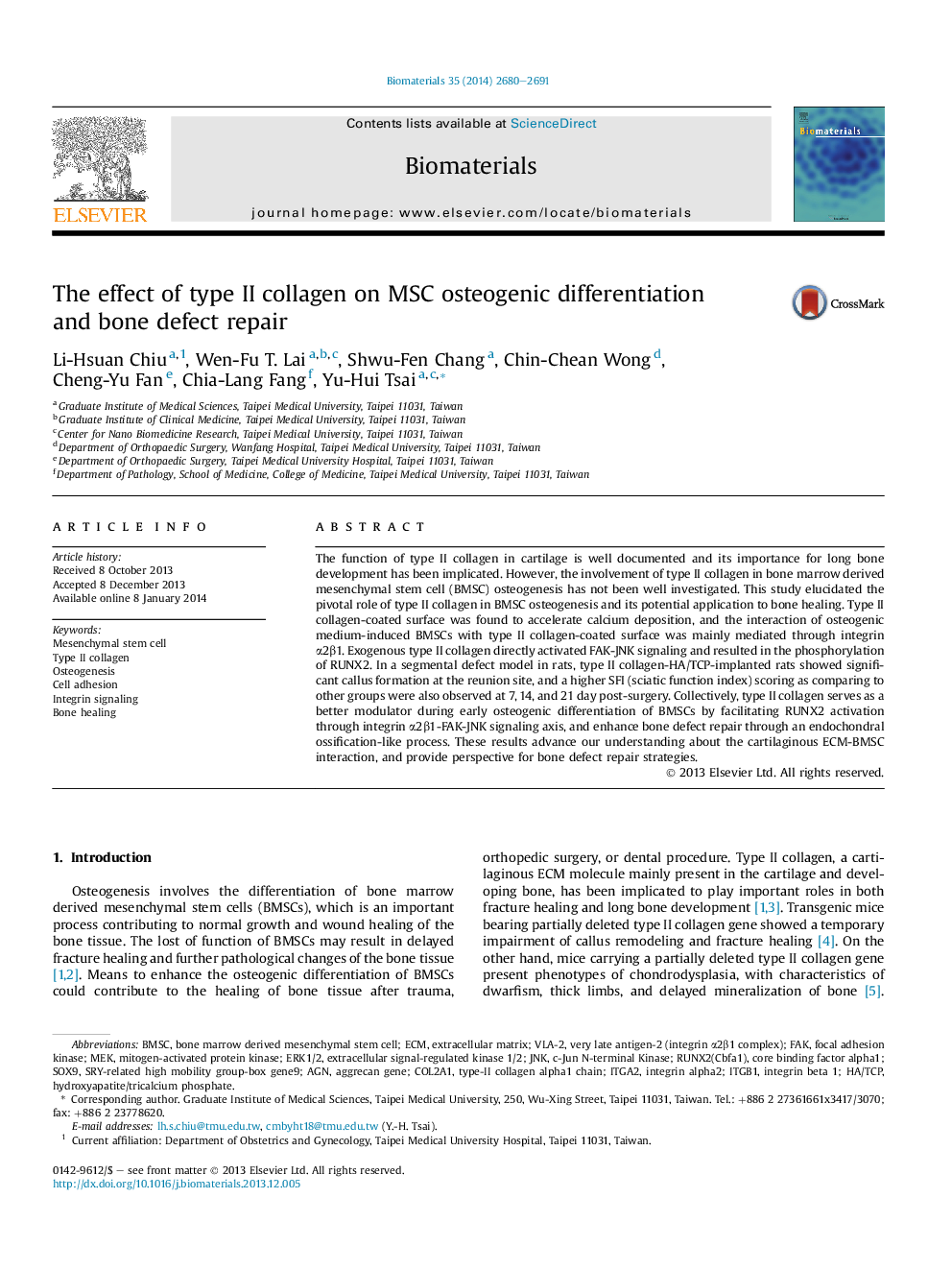| Article ID | Journal | Published Year | Pages | File Type |
|---|---|---|---|---|
| 10227827 | Biomaterials | 2014 | 12 Pages |
Abstract
The function of type II collagen in cartilage is well documented and its importance for long bone development has been implicated. However, the involvement of type II collagen in bone marrow derived mesenchymal stem cell (BMSC) osteogenesis has not been well investigated. This study elucidated the pivotal role of type II collagen in BMSC osteogenesis and its potential application to bone healing. Type II collagen-coated surface was found to accelerate calcium deposition, and the interaction of osteogenic medium-induced BMSCs with type II collagen-coated surface was mainly mediated through integrin α2β1. Exogenous type II collagen directly activated FAK-JNK signaling and resulted in the phosphorylation of RUNX2. In a segmental defect model in rats, type II collagen-HA/TCP-implanted rats showed significant callus formation at the reunion site, and a higher SFI (sciatic function index) scoring as comparing to other groups were also observed at 7, 14, and 21 day post-surgery. Collectively, type II collagen serves as a better modulator during early osteogenic differentiation of BMSCs by facilitating RUNX2 activation through integrin α2β1-FAK-JNK signaling axis, and enhance bone defect repair through an endochondral ossification-like process. These results advance our understanding about the cartilaginous ECM-BMSC interaction, and provide perspective for bone defect repair strategies.
Keywords
ECMCol2a1ITGB1BMSCITGA2AGNVLA-2FAKBone healingBone marrow derived mesenchymal stem cellJnkSox9c-Jun N-terminal kinaseERK1/2Osteogenesisintegrin beta 1Mesenchymal stem cellIntegrin signalingExtracellular matrixMEKmitogen-activated protein kinaseCell adhesionType II collagenextracellular signal-regulated kinase 1/2focal adhesion kinase
Related Topics
Physical Sciences and Engineering
Chemical Engineering
Bioengineering
Authors
Li-Hsuan Chiu, Wen-Fu T. Lai, Shwu-Fen Chang, Chin-Chean Wong, Cheng-Yu Fan, Chia-Lang Fang, Yu-Hui Tsai,
